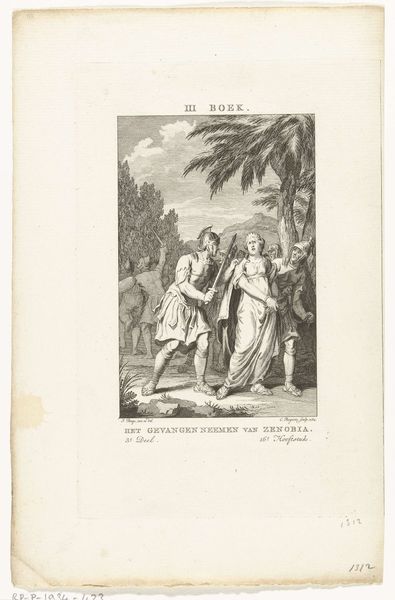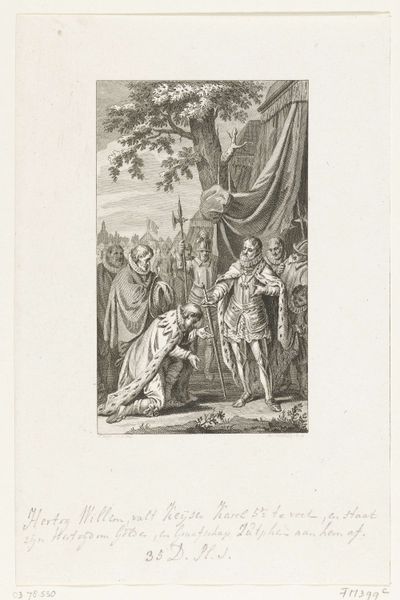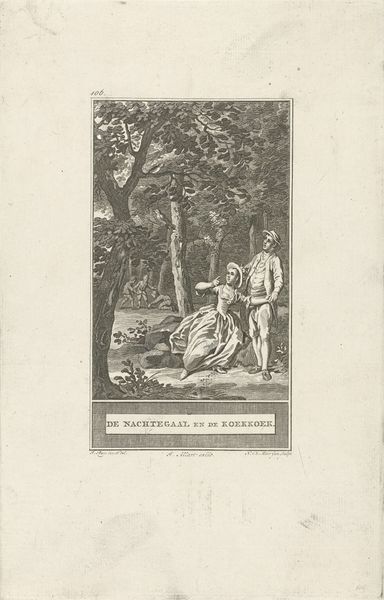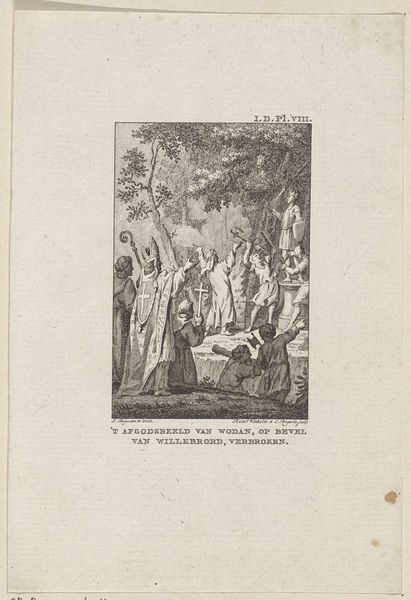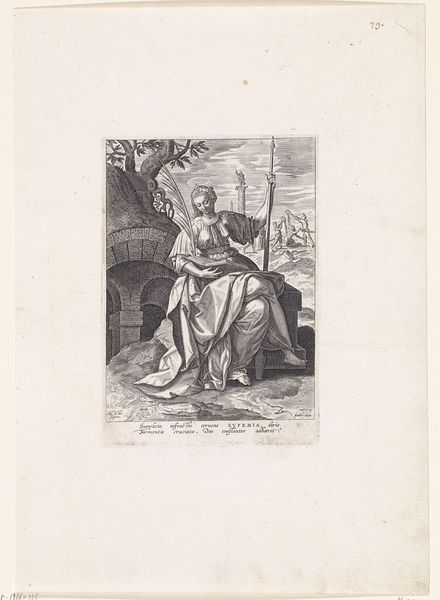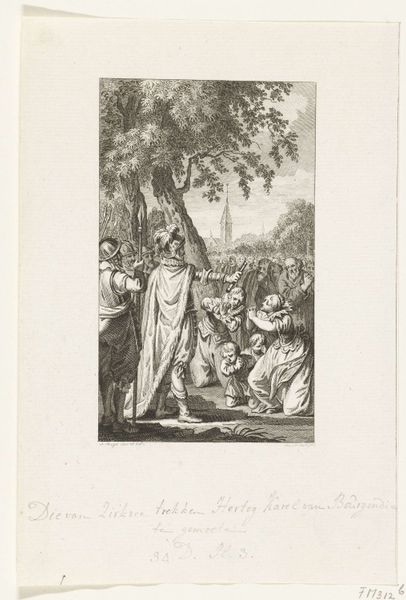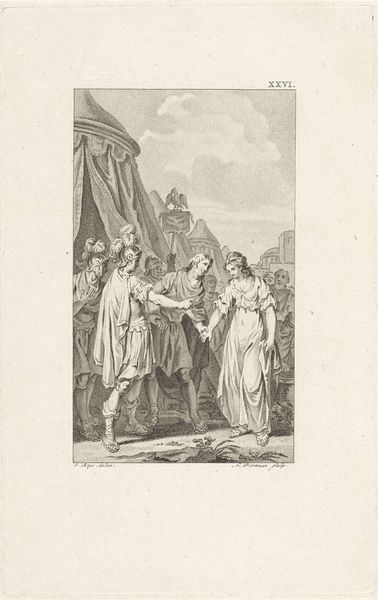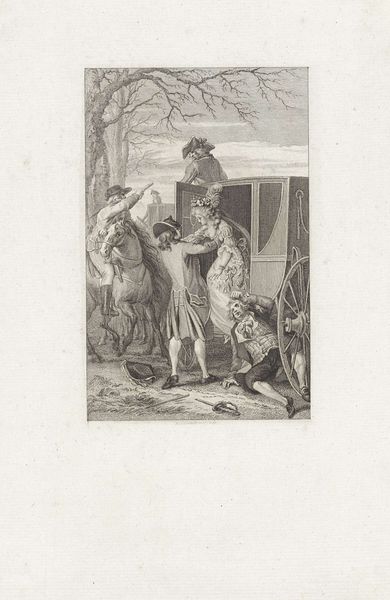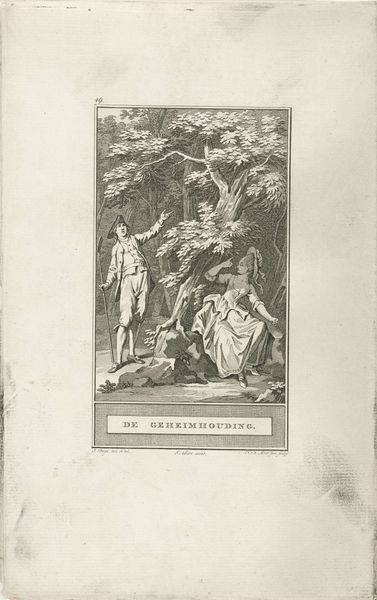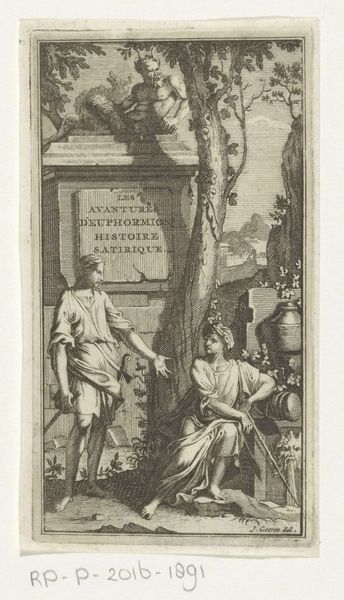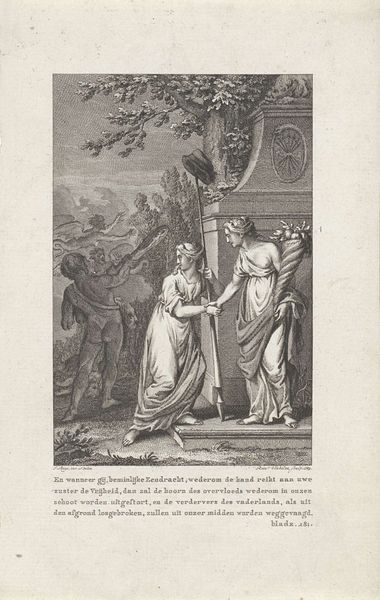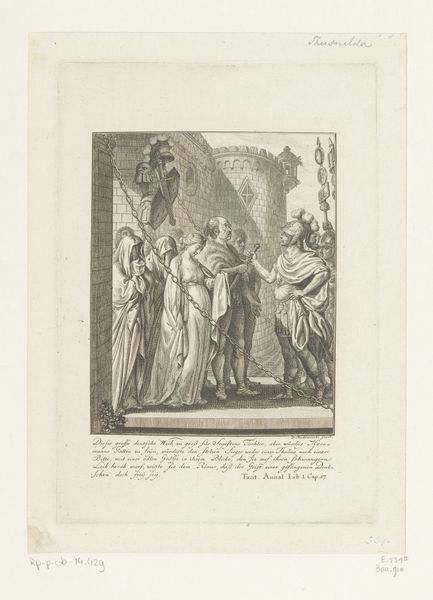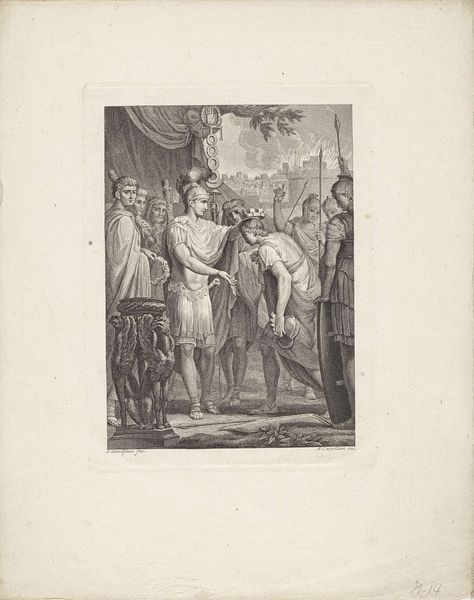
Joodse leider Barchochebas (Simon ben Kosiba) toont vuurspuwende Romein aan Joodse leger 1784
0:00
0:00
cornelisbrouwer
Rijksmuseum
Dimensions: height 254 mm, width 165 mm
Copyright: Rijks Museum: Open Domain
Curator: Look at the intensity of expression captured in this print, a scene of supposed Jewish revolt! It's currently housed in the Rijksmuseum. Editor: Indeed. My immediate reaction is one of stark contrasts – the crisp detail of the foreground figures against the almost sketch-like rendering of the background army creates an intriguing visual hierarchy. What’s the story behind this piece? Curator: This is “Joodse leider Barchochebas (Simon ben Kosiba) toont vuurspuwende Romein aan Joodse leger," created by Cornelis Brouwer in 1784. The engraving supposedly shows the Jewish leader Bar Kokhba revealing a fire-breathing Roman to his army, meant to inspire them in their revolt. The title translates roughly to, "Jewish leader Barchochebas shows fire-spitting Roman to the Jewish army". The work itself seems caught in the transition from Baroque to Neoclassicism, look at the theatrical drama infused into its historical theme. Editor: So, the engraving serves as propaganda! It's interesting how the materiality of print—its reproducibility and portability—served a powerful purpose. Was this created to rally support, to incite outrage, or merely to document the story? What would people make of a fire-breathing Roman? How did such representations affect intercommunal relations, the depiction of the revolt or even consumption patterns related to supporting those groups and social classes? Curator: The production and consumption of images during this period are incredibly complex, as they played multiple roles. On the one hand, yes, images, and especially printed images, could fuel patriotism and even incite violence. At the same time, the institutional patronage—who commissioned it, where was it displayed and who was the audience—shapes how this piece functions. Consider the artist and the potential buyer and the social climate. This narrative has layers. Editor: And Brouwer is using the engraving medium—an easily replicated technique—to convey this fantastical image… It speaks volumes about how accessible such charged narratives could be, and what the value was for doing so on such common, often disposable, medium. Curator: Exactly. We need to also appreciate its position today—now preserved behind glass in the Rijksmuseum. It tells a new narrative: not of conflict but instead about how history, institutions, and preservation influence the consumption of narratives. Editor: An ironic transition from revolutionary propaganda to museum artifact; something originally made to be disposable has become a highly valued piece. Curator: Exactly, there's still so much we could examine. I find it really is remarkable, it brings forth important questions about war, revolt, imagery, and public identity and institutions. Editor: Absolutely. There is much more that can be dissected and pondered here for another time, though.
Comments
No comments
Be the first to comment and join the conversation on the ultimate creative platform.
